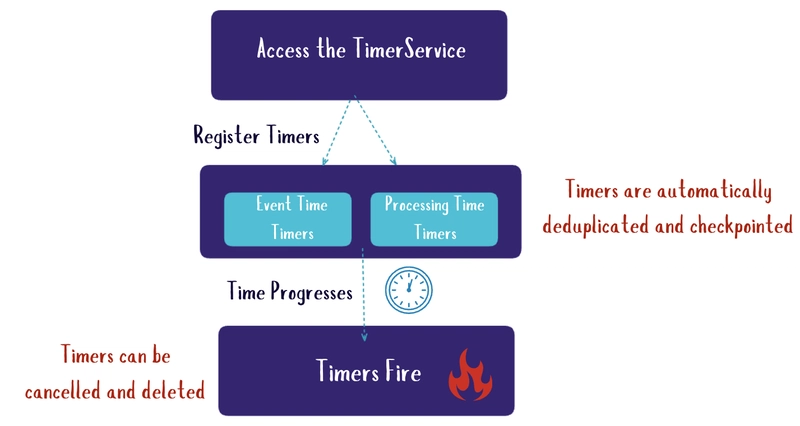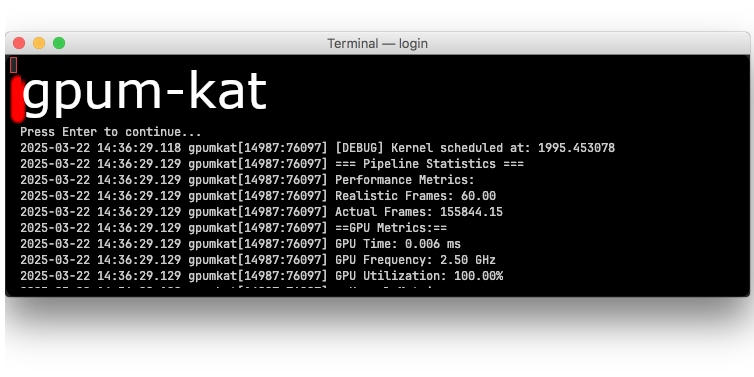A Deep Dive Into Apache Flink Timers
Timers in Apache Flink are scheduled callbacks that can be set to trigger at a specific time in the future. Flink provides two main notions of time for stream processing: processing time and event time. Timers can be registered for either of these time domains: ⌛Processing-time timers: These timers use the system’s real clock (wall-clock time). A processing-time timer triggers when the machine’s current time reaches the specified timestamp. This is essentially "now" as measured by the processing node. Processing time is straightforward and low-latency (no need for watermark coordination), but it can be less deterministic since it depends on the clock of the machine processing the data. ⏳Event-time timers: These timers use the timestamps of events (the time when an event occurred, as embedded in the event). Flink’s event-time processing is driven by watermarks, special messages that flow with the data to indicate progress in event time. An event-time timer triggers when the operator’s watermark passes the timer’s timestamp. This means all events with a timestamp less than or equal to that time have been processed. Event-time timers allow correct handling of out-of-order events and lateness, providing deterministic results based on event timestamps, regardless of processing delays. Key differences

Timers in Apache Flink are scheduled callbacks that can be set to trigger at a specific time in the future.
Flink provides two main notions of time for stream processing: processing time and event time. Timers can be registered for either of these time domains:
⌛Processing-time timers: These timers use the system’s real clock (wall-clock time). A processing-time timer triggers when the machine’s current time reaches the specified timestamp. This is essentially "now" as measured by the processing node. Processing time is straightforward and low-latency (no need for watermark coordination), but it can be less deterministic since it depends on the clock of the machine processing the data.
⏳Event-time timers: These timers use the timestamps of events (the time when an event occurred, as embedded in the event). Flink’s event-time processing is driven by watermarks, special messages that flow with the data to indicate progress in event time. An event-time timer triggers when the operator’s watermark passes the timer’s timestamp. This means all events with a timestamp less than or equal to that time have been processed. Event-time timers allow correct handling of out-of-order events and lateness, providing deterministic results based on event timestamps, regardless of processing delays.
Key differences




















































%20Abstract%20Background%20112024%20SOURCE%20Amazon.jpg)






















































































































![[The AI Show Episode 142]: ChatGPT’s New Image Generator, Studio Ghibli Craze and Backlash, Gemini 2.5, OpenAI Academy, 4o Updates, Vibe Marketing & xAI Acquires X](https://www.marketingaiinstitute.com/hubfs/ep%20142%20cover.png)
























































































































































































































































-Nintendo-Switch-2-–-Overview-trailer-00-00-10.png?width=1920&height=1920&fit=bounds&quality=80&format=jpg&auto=webp#)





















_Anna_Berkut_Alamy.jpg?#)













































































































![YouTube Announces New Creation Tools for Shorts [Video]](https://www.iclarified.com/images/news/96923/96923/96923-640.jpg)





































































![[Weekly funding roundup March 29-April 4] Steady-state VC inflow pre-empts Trump tariff impact](https://images.yourstory.com/cs/2/220356402d6d11e9aa979329348d4c3e/WeeklyFundingRoundupNewLogo1-1739546168054.jpg)





























































